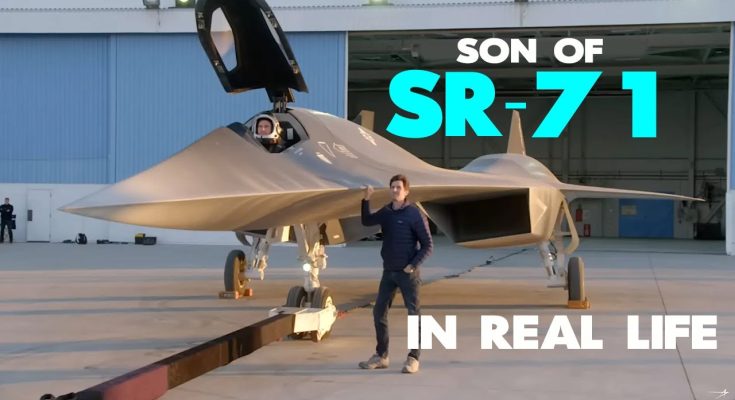The SR-71 Blackbird is an aircraft that embodies the pinnacle of aviation engineering, a true legend that defied the limits of speed, stealth, and altitude. Developed by Lockheed Martin’s Skunk Works during the Cold War, the SR-71 was designed to be an unmatched reconnaissance aircraft capable of outpacing any threat that came its way. Its story is one of innovation, secrecy, and a relentless pursuit of excellence that led to its status as an iconic symbol of technological achievement.
Birth of a Legend
The SR-71 was born out of the need for a high-speed, high-altitude reconnaissance aircraft that could fly deep into enemy territory without being intercepted. During the late 1950s, the U.S. Air Force realized that existing reconnaissance planes, such as the U-2, were vulnerable to Soviet surface-to-air missiles and fighter interceptors. The answer was a new aircraft that could travel faster than any missile or enemy fighter and at altitudes where interception was nearly impossible.
Enter the Blackbird. Designed under the direction of Clarence “Kelly” Johnson at Lockheed’s Skunk Works division, the SR-71 was a radical departure from conventional aircraft design. With its sleek, angular fuselage, delta wing shape, and unique black paint, the SR-71 was designed to minimize its radar signature and maximize its performance at high speeds and altitudes. The aircraft’s titanium construction was chosen for its strength and heat resistance, as the SR-71 could reach speeds exceeding Mach 3, generating immense frictional heat.
The Blackbird’s Speed and Altitude
The SR-71 was, and still is, one of the fastest aircraft ever built. Its maximum speed exceeded Mach 3.3 (more than 2,200 miles per hour), making it more than three times the speed of sound. To put it into perspective, the SR-71 could fly from New York to London in just under 1 hour 50 minutes, a feat that no other aircraft could match at the time.
The aircraft’s incredible speed was paired with a flight ceiling of over 85,000 feet, well above the range of most enemy surface-to-air missiles and interceptors. At such altitudes, the SR-71 operated in a rarefied atmosphere, where it could capture high-resolution imagery and intelligence from thousands of miles away, making it an invaluable asset for the U.S. military during the Cold War.
Stealth and Evasion
One of the key features that made the SR-71 so remarkable was its ability to evade enemy defenses. While it wasn’t a “stealth” aircraft in the modern sense, its design incorporated advanced features that made it nearly impossible to detect by radar. Its dark black paint helped dissipate the heat generated during high-speed flight and blended with the night sky, making it harder to spot. Its angular body shape, with sharp edges and smooth contours, also minimized radar cross-section.
Moreover, the SR-71 wasn’t just fast; it was also highly maneuverable. If an enemy missile was launched, the Blackbird could outrun it, and if a fighter aircraft attempted to intercept, the SR-71 would simply climb higher or accelerate faster, leaving them behind in the dust.
The SR-71’s Operational Legacy
The SR-71 was used primarily for reconnaissance missions, gathering intelligence during the height of the Cold War. Its ability to fly at supersonic speeds and high altitudes allowed it to collect imagery, radar, and electronic signals over hostile territories with remarkable precision. While it was mostly used by the United States Air Force, it also provided vital intelligence during the Vietnam War and the Gulf War.
Despite its unmatched capabilities, the SR-71 was retired from active service in 1998, largely due to the advent of more modern satellite reconnaissance technology and the increasing cost of maintaining the aircraft. However, its legacy continues to live on, with many of its records for speed and altitude still unbroken.
End of an Era
The SR-71 Blackbird was not just a technological marvel; it was a symbol of the cutting-edge military advancements of its time. Even today, it remains one of the most famous and revered aircraft in aviation history. The Blackbird defied the sky, pushing the boundaries of what was possible and leaving an indelible mark on the world of aviation. While no longer in service, the SR-71 continues to inspire engineers, aviators, and aviation enthusiasts worldwide, reminding us of an era when the sky truly seemed like the limit.
In a world where speed, stealth, and intelligence are paramount, the SR-71 Blackbird was a living legend — a testament to human ingenuity and the spirit of innovation that forever changed the skies.



